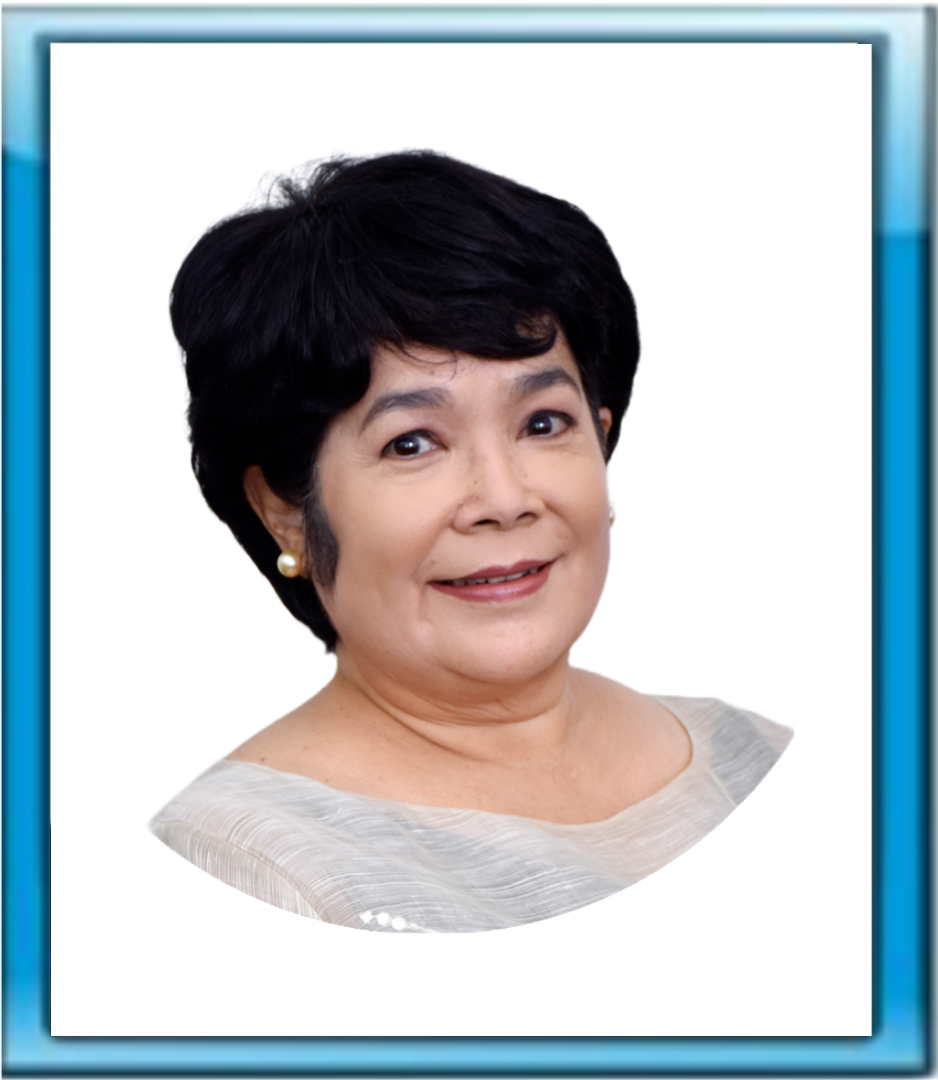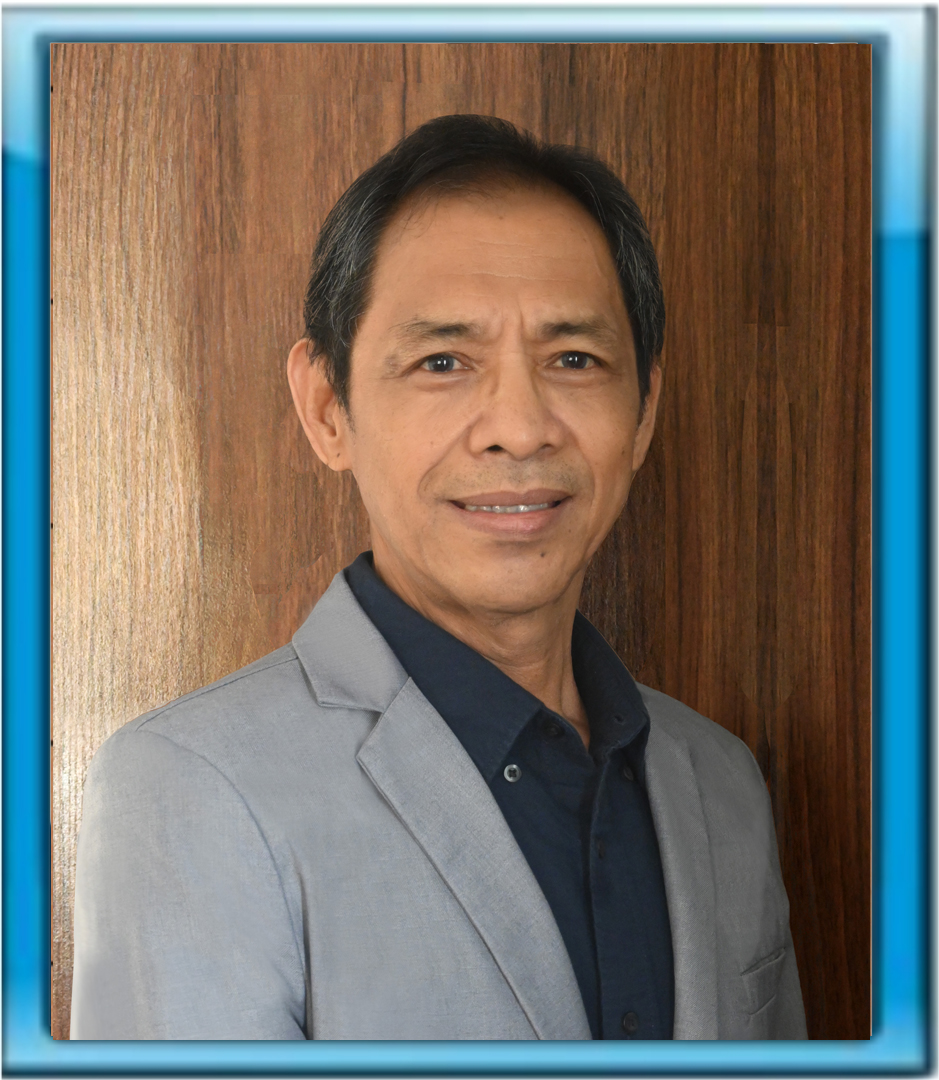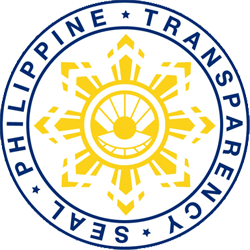Company ProfileThe Philippine fishing industry was experiencing an annual production growth rate of 5.5% on the national level prior to the creation of PFDA. This accomplishment , however, spawned marketing problems due to inadequate fish marketing infrastructure, poor fish handling practices, chaotic system of distribution, and limited post-harvest processing technology. Immense losses from spoilage, fish quality deterioration, slow rate of fish dispatch, and price instabiltiy had been the results of these problems. Thus Presidential Decree 977, creating the Philippine Fish Marketing Authority (PFMA), was promulgated on August 11, 1976 to address and provide solutions to the fishing industry's post-harvest problems. In the need to pursue the national economic development with renewed dedication and greater determination, Executive Order No. 772 was issued on February 8, 1982 to amend P.D. 977. By virtue of this E.O., the PFMA was renamed as Philippine Fisheries Development Authority (PFDA) with expanded functions and powers and revised constitution of the Board of Directors.
The leader of fishery post-harvest services towards a food secure and resilient Philippines by 2025.
We, in the Philippine Fisheries Development Authority, shall strive to:
A government owned and controlled corporation attached to the Department of Agriculture, created to promote the development of the fishing industry through the provision of post-harvest infrastructure facilities and essential services that improve efficiency in the handling and distribution of fish and fishery products and enhance their quality.
The Philippine Fisheries Development Authority endeavors to achieve these objectives:
We, the officers and staff of the Philippine Fisheries Development Authority, commit to:
Programs and ServicesIn more than four decades that the PFDA has been in the fisheries sector, the Authority has made headways in attaining its objectives and fulfilling its mandate. Through three core programs, namely: (1) the Regional Fish Ports Program; (2)the Municipal Fish Ports Program; (3) the Ice Plants and Cold Storages Program , PFDA continuously responds to the need of the sector for post-harvest facilities and services.
The Regional Fish Ports Program involves the provision and operation of fish port complexes in strategic fish landing centers nationwide. These fish ports are equipped with facilities such as breakwater, landing quay, market halls, refrigeration and processing facilities, slipway, and related facilities. In particular, the program addresses the needs of the commercial fishing boat operators, municipal fishermen, and fish processors/exporters, among others. A total of eight (8) fish port complexes in Navotas, Sual, Lucena, Camaligan, Iloilo, Davao, Zamboanga, and General Santos are being managed by the Agency under this program. Beneficiaries: Fisherman, fish brokers/consignacion, fishing boat/vessel operators, and fish buyers/traders/viajeros. Services Offered: Landing Facilities - Pier, Fish unloading
The Municipal Fish Port Programs caters to the post-harvest requirement of sustenance fishermen. It entails the provision of smaller fish landings and market facilities in selected fishing communities nationwide. Some of these municipal fish ports act as satellite ports for the regional fish ports. The PFDA provides the needed training on port operations and maintenance for the eventual turnover of the ports' management to the Local Government Units (LGUs). Beneficiaries: Fisherman, fish brokers/consignacion, fishing boat/vessel operators, and fish buyers/traders/viajeros. Services Offered: Landing Facilities - Pier, Fish unloading Ice Plants and Cold Storage Program The Ice Plants and Cold Storage program helps satisfy the ice requirements of the fishing industry. It involves the provision of ice making machines of different magnitudes and cold storages of varying capacities. Beneficiaries: Fisherman, fish brokers/consignacion, fishing boat/vessel operators, and fish buyers/traders/viajeros. Services Offered: Refrigeration Facilities - Ice Plant
Regional Fish PortsNFPCNavotas Fish Port Complex The Navotas Fish Port Complex (NFPC), the premier fish center of the Philippines and one of the largest in Asia, is the first major fishing port and fish market complex placed under the jurisdiction, control and supervision of the Philippine Fisheries Development Authority (PFDA). It is a traditional landing place of commercial fishing boats operating in various fishing grounds in the Philippines. The construction of the Port Complex spanned three years from August 1973 to August 1976 through a Php 88 Million loan from the Asean Development Bank (ADB). It supplies fish and other aquatic products to major markets in Metro Manila. The fish port is a business center with markets, ice plants and cold storage, fish processing facilities, canneries, shipbuilding and ship repair facilities, restaurants, fuel depot, gasoline stations and other facilities necessary for the fishery sector. Thousands of buyers visit the port daily where an estimated 15 commercial fishing vessels call port and unload a total volume of about 300 tons. Overland vehicles from different provinces also bring in additional volume of 50 tons.
Night-time fish trading operations at Navotas Fish Port Complex
Located at the heart of Navotas in the Northeastern section of Manila Bay, NFPC can be reached direct from the Rizal Park via the Roxas Boulevard Extension (R-10) which will eventually be extended to Bataan. The circumferential road (C-3) coming from Sampaloc, Manila and passing through Caloocan City ends directly in front of the main exit gate of the fish port. NFPC, in fact, is centrally located within a five-kilometer radius of the cities of Manila, Quezon, Caloocan, Navotas and Malabon. It is only 10 minutes away from Divisoria, the country's premier bargain center
• Unloading and marketing of fish both from commercial and municipal fishing vessels. • Provision of facilities for harbor operations including drydocking, fishing gear repair, ice, water and fuel conveyance and product transshipment. • Provision of processing and refrigeration facilities and services and companies engaged in sardines and tuna canning. • Marketing information dissemination such as fish prices, species processed inside the port and volume of processed products. • Provision of communication facilities, office spaces and raw land for the establishment of fishery-related factories.
• Pier Nos. 1, 2, 3, 4, 5
Office of the Port Manager Email Address: This email address is being protected from spambots. You need JavaScript enabled to view it.
GSFPCGeneral Santos Fish Port Complex The fishing industry in Region XII, is primarily centered in General Santos City, supporting thousands of jobs and generating millions in foreign exchange earnings. It aspires not only to exhibits fish and frozen tuna to the local and foreign market, but endeavors to optimize opportunities by adding more value to its fishery products. The operationalization of General Santos Fish Port Complex (GSFPC) is considered of great importance in East Asia Growth Area (EAGA) as it is noted to be the major fishing post harvest infrastructure in the Mindanao area. GSFPC boasts of a complete six -35°C cold storage each with 300 metric ton capacity; 4 tons/day brine freezer; a 60 tonner ice plant and a 1680-meter landing/preparation area. GSFPC attracts investors involved in an array of economic interests, among which are some of the largest companies in the Philippines’ fishery sector. More clients are lured to put their investments at the fish port with the completion of the port’s expansion project that included additional refrigeration facilities and wharves that can accommodate huge capacity refrigerated vessels, among others. The newly constructed facilities boosted trading and business transactions in GSFPC and with their core thrust in quality assurance, the port is linked to various global market communities. Location The GSFPC, covering an area of 32 hectares, is strategically located at Brgy. Tambler, General Santos City in South Cotabato. GSFPC which lies along the shores of Sarangani Bay is 17km south of the city proper. Constructed and financed by Japanese Overseas Economic Cooperation Fund under the Nationwide Fishing Ports Project Package II, the port complex is the second largest fish port in the Philippines next to Navotas Fish Port Complex. General Santos Fish Port Complex
To ensure the safety and quality of fish and processed goods intended for domestic and international markets through modern facilities and infrastructures, as well as by technical soundness and truthfulness of product information for the protection of consumers. Major Facilities PORT AREA 32 Hectares (including agro-industrial area) HARBOR FACILITIES Harbor Basin I 1.5M Wharf 400 meters berthing length Concrete stairlanding Harbor Basin II- 3.5M Wharf 400 meters berthing length Multi-level quay type Harbor Basin III- 6.0M Wharf 360 meters berthing length Quay type landing Harbor Basin IV- 1.5M Wharf (with breakwater)325 meter berthing length Concrete stairlanding Thru China National Construction and Agricultural Machinery Import/Export Corporation (CAMC) Expansion Project
320 meters berthing length Quay type landing
200 meters berthing length Quay type landing
MARKET FACILITIES
Contact Information Office of the Port Manager Tele Fax (083)552-3996 email: This email address is being protected from spambots. You need JavaScript enabled to view it. DFPCDavao Fish Port Complex The Davao Fish Port Complex (DFPC) is the seventh commercial fish port operated and administered by the Philippine Fisheries Development Authority (PFDA). It is the second major fish port complex established and located in the Mindanao Area (the third being the General Santos Fish Port Complex that started operations in CY 1998). Built at a cost of P359,192,594.59, the construction of the DFPC commenced on June 25, 1993 and was completed in April 1995 under the supervision of the Project Management Office–Fishing Ports, Department of Transportation and Communications (DOTC). This infrastructure project of the national government was made possible through the funding obtained from the Overseas Economic Cooperation Fund (OECF) of Japan. Soon after its inauguration in the same year it was completed, port business operations commenced. Aside from the standard and basic port operations of berthing and unloading of fish catch by domestic fishing vessels, the DFPC serves as a center for the collection, processing, storage and packaging of fishery and other marine products for distribution to both domestic and export markets. During its initial year of operation, the DFPC has become attractive to foreign long-line vessels thereby making it as an alternative transshipment port in the Asia Pacific Region. Similarly, the DFPC has been widely considered as center of trade within the East Asia Growth Area (EAGA) for the simple reason that this fish port complex is now recognized as one of the most modern commercial fishery post-harvest infrastructures in the Mindanao Region. Location Davao Fish Port Complex is situated in Daliao, Toril District, that is about 16 kilometers south of the center or downtown Davao City. Hence, it is readily accessible either by land or sea transport from downtown Davao City. It is bounded on the North by Davao del Norte, by Davao Gulf on the East, by the municipality of Sta. Cruz on the South and North Cotabato Province on the West. It is located 1250 30' east longitude and 70 00' North latitude. 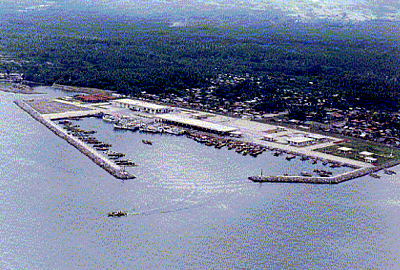 Davao Fish Port Complex
Services and Port Operation
Ice Making Plant 30 T/day -35oC Common Cold Storage 80 ton capacity Contact Freezer (3 units) 270 kg (2 Units), 400 kg (1 Unit) Ice Crusher 5 Tons/hour (1 Unit), 10 Tons/hour (1 Unit) Refrigerated Vans 10Tons capacity, 5Tons capacity
Fresh Water Reservoir 150 cubic meters Water Treatment Plant Waste Water Treatment Facility
Office of the Port Manager Email: This email address is being protected from spambots. You need JavaScript enabled to view it. ZFPCZamboanga Fish Port Complex The establishment of Zamboanga Fish Port Complex (ZFPC) in Western Mindanao provided the fishing industry in the region with a systematized fish marketing and distribution system. It also supplemented current and future infrastructure development programs that support the integration of the fishing industry nationwide. ZFPC is the second fish Port Complex completed under the Nationwide Fishing Ports Project Package I, financed by the Japanese Government through the Overseas Economic Cooperation Fund. The port has emerged as the largest marine products processing center in Peninsular Zamboanga. The diverse and high quality marine products that are being produced at the port led to the restrengthening of trade links in Western Mindanao (which includes the province of Zamboanga del Norte, Zamboanga del Sur, Basilan and the four cities of Dapitan, Dipolog, Pagadian and Zamboanga, and their neighbors, an ancient trading partnership that existed since 1635. Its strategic location in the country as well as within the East Asean Growth Area (EAGA) is recognized by businessmen, both local and national; and those belonging to the Brunei, Indonesia, Malaysia, Philippines (BIMP)-EAGA Region as manifested by the number of business missions that visited the Complex.
ZFPC is situated in a 12.5 hectare complex in Barangay Sangali, Zamboanga del Sur, about 28 km. or 1/2-hour travel time from the city proper. The port is geographically bounded on the north by Zamboanga del Norte, on the east by Misamis Occidental, Lanao del Norte and Panguil Bay, on the south by Moro Gulf and on the southwest by Zamboanga City. This city is approximately 1 hour 15 minutes via direct flight from Manila. Zamboanga Fish Port Complex
Services
Office of the Port Manager TeleFax: 062)992-4526 Telephone Nos: (062)992-0751 Email: This email address is being protected from spambots. You need JavaScript enabled to view it. IFPCIloilo Fish Port Complex The Iloilo Fish Port Complex (IFPC) is a major center of fish trading and marine products processing in Region VI. The port complex is the traditional landing site of bagnetters and other fishing bancas in Iloilo City and nearby towns. This strategic location has made the port the major fish source of Iloilo City's major public markets and adjacent municipalities. IFPC is situated in a 21 hectare reclaimed area at Barangay Tanza, Iloilo City. It is served by extensive concrete road network that links it to the major business centers in the region and adjacent municipalities.
Ilo-ilo Fish Port Complex The port can be reached through a 45 minute direct flight from Manila or through an 18-hour trip via the fastest inter-island vessel which regularly ferry passengers and cargoes to Iloilo City. Banks, telecommunications, power and water supply in the area adequately support the port's operations.
Office of the Port Manager LFPCLucena Fish Port Complex As one of the regional fish port complexes being managed and operated by the Philippine Fisheries Development Authority (PFDA), a government-owned and controlled corporation attached to the Department of Agriculture (DA), the Lucena Fish Port Complex (LFPC) is committed to realize PFDA's Corporate Vision as a “dynamic and viable government corporation that provides services and contributes to the country's food security by supporting an environmentally sustainable and competitive fishing industry through technologically advanced post harvest facilities and infrastructure”. The LFPC was established as part of the Nationwide Fish Ports Project Package I and was constructed in a reclaimed area of 7.8 hectares. The total project cost of P283,976,020 came from a loan from the Overseas Economic Cooperation Fund of Japan. Its construction, which was started in 1982, was undertaken through the supervision of the Project Management Office (PMO) of the Department of Public Works and Highways. The LFPC was originally programmed to be completed in 1983 but the contract period was extended principally due to the delay in the delivery of Government Furnished Materials. Finally, after more than nine (9) long years of construction, it was completed in September 1991 and in February 13, 1992, the fish port officially started its operations. Location Lucena Fish Port Complex (LFPC) is located at Barangay Dalahican, Lucena City, which is about five (5) kilometers from the city proper and 162 kilometers of Manila. By land, it is about four (4) hours trip from Manila. Approximately, it is connected by 200 meters of access road to Barangay Dalahican and is accessible through private and public utility vehicles. 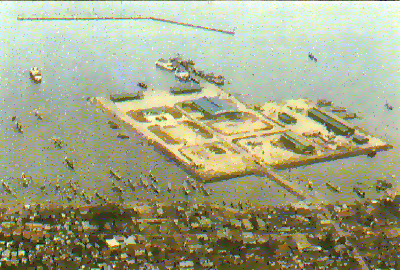 Lucena Fish Port Complex Services
Major Facilities
Ice Making Plant 25MT/day Main Ice Storage 75 MT Daily Ice Storage 25 MT -5°C Cold Storage 50 MT capacity -35°C Cold Storage 50 MT capacity Contact Freezer 200 kgs / cycle
Slipway 150 MT/ set Winch House 35 SQM10 MT Carpentry Shop 300 SQM Foundry Shop 1,600 SQM
Contact Information Office of the Port Manager Fax No. 042) 373-4103 Email: This email address is being protected from spambots. You need JavaScript enabled to view it. BFPCBulan Fish Port Complex The Bulan Fish Port Complex (PFDA - BFPC) is the youngest Regional Fish Port added under the management of the PFDA. In 2017, PFDA - BFPC was officially upgraded from a municipal fish port to its current Regional Fish Port (RFP) status. Aside from its role as a Regional Fish Port, the PFDA - BFPC jointly manages the operations of Tacloban Municipal Fish Port (TMFP) in Leyte with the local government unit concerned.
One of the key improvements made for the PFDA - BFPC was the expansion project to accommodate new facilities such as ice stalls, food stalls, banyera warehouse, a spacious parking area, and bigger market halls. Through this expansion project, it is expected that the PFDA - BFPC will attract more business opportunities and encourage more investors to transact at the port.
During its planning stage, among the target beneficiaries of this project are the existing locators operating inside which started business since the start of operations as a municipal fish port. Aside from these locators, more than 1,500 registered fishing vessels, serving as the main source of livelihood to more than 6,400 individuals in the local community, are taking advantage of the newly improved PFDA - BFPC.
The expansion project also resolved the PFDA - BFPC’s perennial problem as a previous MFP like congestion in the landing quays and insufficient market hall space.
Location
It is in Bulan, Sorsogon, the south-westernmost tip of Luzon Island, making it accessible to fishing boats and fish investors alike. It has a wide area of influence due to its strategic location and is presently thriving with commerce coming from Northern Samar, Masbate, and Leyte.
Services
Major Facilities
Contact Information: Office of the Port Manager Pier 2, ZOne 4, Bulan, Sorsogon (056) 555-22-01; 0908 627 9888 Email: This email address is being protected from spambots. You need JavaScript enabled to view it.
CFPCamaligan Fish Port The Camaligan Fish Port (CFP) is the fourth major fish port project completed by the government under the Nationwide Fishing Ports Projects Package I. The completion of the fish port in Camaligan enabled the Philippine Fisheries Development Authority (PFDA) to extend its services to the Bicol Region in terms of efficient handling and distribution of fish and fishery products. The operation of fish ports is a necessary component of the government’s avowed objective of providing steady and sufficient supply of fish at reasonable prices. The fish port makes this possible by providing necessary post-harvest facilities to ensure that newly hauled fish and other fishery products are handled properly and expeditiously at least costs. Camaligan Fish Port which was built on a 4.0 hectare property is provided with multi-purpose pier, a market hall and an administration building. The other important features include an adequate water and power supply, paved parking area and a guarded entrance. A major component of the fish port is its refrigeration system designed to meet international standards. The system is housed in a separate building complete with 15-ton ice making plant, cold storage and contact freezers ideal for processing. Interested investors may set up within the complex, under a lease arrangement, their own processing plants for better access to these facilities.
Nestled at the bank of the Bicol River in Barangay Dugcal, the CFP is strategically located just 1.5 kilometers from the poblacion and only four kilometers from Naga City, Camarines Sur's largest urban settlement. A traveler from Manila, which is 425 kilometers away, can reach Naga in approximately eight to nine hours by land or in 45 minutes by air.
 Camaligan Fish Port
Services
Major Facilities
Office of the Port Manager Email: This email address is being protected from spambots. You need JavaScript enabled to view it. SFPSual Fish Port The Sual Fish Port (SFP) is one of the fish ports under the Fishing Ports Project Package I of the Philippine Fisheries Development Authority. It was established to provide basic post harvest facilities and services for the fishery sector in Region 1. As the only regional fish port in Northern Luzon, SFP was designed to accommodate bigger fishing boats and cargo vessels. The fish port was established for the unloading of rich marine products of Lingayen Gulf and the waters of the western coastline of Pangasinan and the harvests from the province’s vast inland resources. Location SFP is constructed on a 3.8 hectare-reclaimed land located at Poblacion, Sual, Pangasinan. It was completed out of P29 million loan from the Japanese government through the Overseas Economic Cooperation Fund (OECF). Construction was undertaken by the Kawasaki Steel Corporation of Japan under the supervision of the Department of Public Works and Highways (DPWH).
Sual Fish Port Services
Major Facilities
Office of the Port Manager email: This email address is being protected from spambots. You need JavaScript enabled to view it. Key Officers
|
||||||||||||||||||||||||||||||||||||||||||||||||||||||||||||||||||||||||||||||||||||



